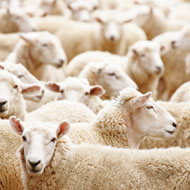New genetic groups of FMDV discovered

Scientists say there could be more novel FMDV genotypes that remain un-sampled and should now be examined to help aid FMD control.
Scientists have discovered two new genetic groups of foot-and-mouth disease virus (FMDV).
There are seven serotypes of FMDV, of which type O, A, SAT 1, SAT 2 and SAT 3 are currently circulating in Africa.
A research team from the Pirbright Institute studied the genetic material of FMDV samples from eastern and southern Africa. They found that while the newly discovered genotypes belong to the SAT serotype, they have distinct genetic traits that are not shared with other SAT viruses.
It is thought that the new virus groups may be representative of viruses that existed before the Great African Rinderpest Pandemic in 1887-1897, which caused a mass die-off of cattle and African buffalo.
This is likely to have caused the extinction of many FMDV strains that were circulating at the time, leaving only small ‘pockets’ of FMDV in isolated buffalo populations.
After the rinderpest pandemic ended, scientists speculate that serotypes O and A were re-introduced into Africa from other continents through livestock imports. Meanwhile SAT serotypes are thought to have re-emerged from the clusters of African buffalo that survived the pandemic.
Novel strains identified in the recent study are believed to contain genetic signatures of the FMD viruses that existed before the pandemic.
According to the research team, the study suggests there could be more novel FMDV genotypes that remain un-sampled and should now be examined to help aid FMD control.



 The Federation of Independent Veterinary practices (FIVP) has announced a third season of its podcast, Practice Matters.
The Federation of Independent Veterinary practices (FIVP) has announced a third season of its podcast, Practice Matters.